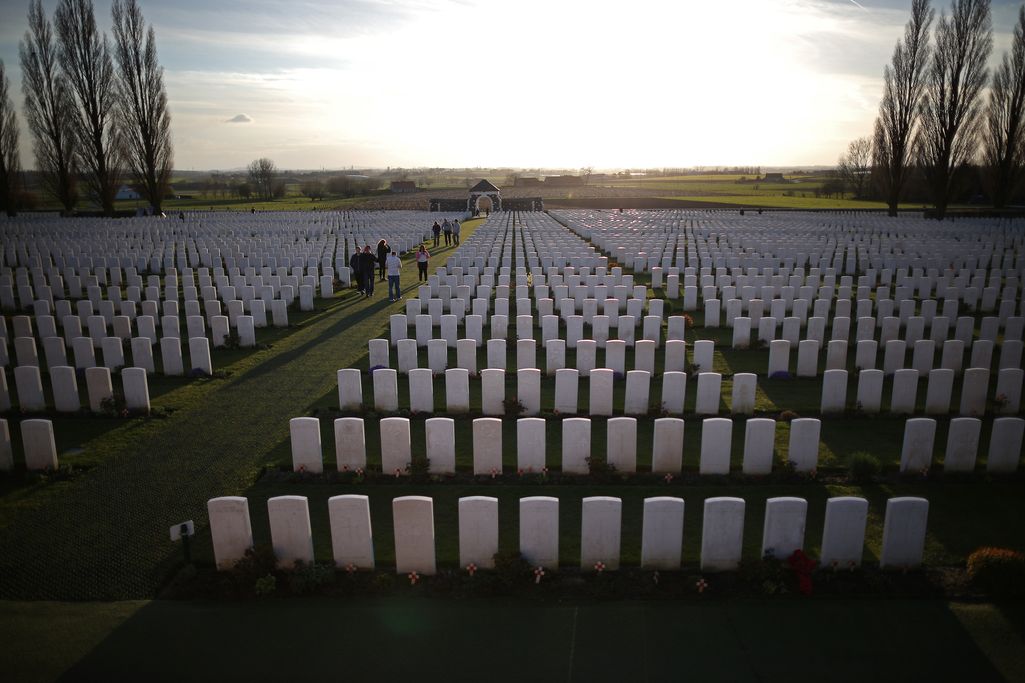Why People Are Looking for End-Of-Life Options Outside of Cremation and Conventional Burial
Article by Lizzie Plaugic, The Verge
On the day before her 56th birthday, Grace Seidel talked to me about dying. It probably wasn’t going to happen anytime soon, she said, but when it did, she knew what she wanted her family to do with her body: compost it. Earlier this year, Seidel found out about the Urban Death Project — a proposed system that would turn bodies of the dead into compost — and knew instantly it was how she wanted to go out.
“It took a nanosecond for me to make that decision,” Seidel said. “My brain was probably already working in that direction.”
Seidel, an avid gardener who lives in Seattle, said she’s recently been drawn to the idea of green burials, and the Urban Death Project felt like an intimate, even spiritual way to return to the earth. So she donated $2,500 to the project’s Kickstarter campaign, which secured her a space in the “core”: a multi-story vault designed to sit at the center of every Urban Death facility. The design is just a concept for now, but it will work something like this: Bodies of the dead will be carried to the top level of the core — which can hold several bodies at once — where they will be covered in wood chips. As each stage in the composting process is completed, the bodies will move down a level until they have completely decomposed. The resulting material will then be screened for non-biodegradable objects, like titanium hips or gold teeth, and cured before being handed off to the families.
/cdn0.vox-cdn.com/uploads/chorus_asset/file/3742590/Screen_Shot_2015-05-31_at_12.20.05_PM.0.png)
The Urban Death Project is the brainchild of Seidel’s fellow Seattle resident and architect Katrina Spade, who was inspired to design the system while watching her children play one day two years ago. “I had this one moment one day where I was watching them and I thought, ‘Oh it’s so great how fast these babies are growing,'” she said. “And then I realized that we’re all growing at the same rate and one day I was going to die.” Spade says the Urban Death Project allows people to embrace their eventual return to Earth’s organic ebb and flow. “We’re part of the natural ecosystem now, and when we die, we’re quite literally turning back into other parts of the world. We’re turning into soil, trees, plant life eaten by animals,” she said. “It’s not just symbolic, it’s actually happening.”
“WE’RE TURNING INTO SOIL, TREES, PLANT LIFE EATEN BY ANIMALS.”
The project surpassed its Kickstarter funding goal of $75,000 in May, and now the biggest hurdle left is legislation. While farmers have been composting livestock for years, human composting has no legal precedent. Spade says she’s working with several legislators to discuss regulation, and is confident the process will be mostly administrative. “I don’t think it’s going to be a terrible legal battle,” she said. What might take longer to change, however, is Americans’ perception of unconventional burials.
“For people that fear death, traditional burial and cremation are easier to take. You don’t have to come face to face with the mortality of our bodies,” Seidel said. “If you embalm somebody, you have a funeral for them, they look very nice in their casket. And then you don’t see them again. You can pretend they’re going to look that way forever.”
The birth of the funeral industry
Americans now have more options than ever when it comes to deciding what happens to their bodies after they die, but burial and cremation still lead the pack by a long shot. Conventional burial is expected to account for 45.8 percent of end-of-life choices in 2015, while the projected cremation rate is 48.2 percent, according to the National Funeral Directors Association. And the number of people choosing cremation in the US continues to increase year after year. In 1985, cremation accounted for just 14.9 percent of final dispositions, and by 2020, that number is expected to rise to 55 percent, according to the Cremation Association of North America.
Because people have migrated to cities in great numbers over the last century, some urban cemeteries are running out of room. Around the world, sufficient burial space is becoming increasingly scarce. A 2013 study suggested nearly half of the cemeteries in England could fill up entirely in the next two decades, according to the BBC. And, as more and more people begin to realize the impact their death can have on the earth, burial methods that don’t contribute to ecological destruction start to look more appealing.
Economic factors also play a role here. End-of-life options are more expensive than they’ve ever been. In the 1960s, the average cost of a funeral was $708; in 2012, it was $7,045. Combined with crematory revenue, funeral home revenue is expected to grow to $17.2 billion by 2019, according to the National Funeral Directors Association. People seem to be willing to pay more for customization (the highest end of which can reach tens of thousands of dollars), or they’ll go simple and pay less hoping to avoid any kind of spectacle.
Memorials for the dead can be traced back to ancient times, but death used to be a much simpler matter. Before the advent of the funeral home at the turn of the 20th century, most burials occurred in the home. Families would bathe, clothe, and bury their loved ones on their own property. What many people today consider to be a pretty standard burial practice — embalming the dead, choosing a casket — didn’t really emerge until the Civil War. Army doctors dealing with hundreds of dead soldiers who were miles away from home needed a way to preserve bodies until their families could see them. Families who could afford the expense would have their sons’ bodies embalmed and shipped across state lines.
DEATH USED TO BE MUCH SIMPLER
One of the most elaborate embalmings in American history goes to the 16th president. After Abraham Lincoln was assassinated in 1865, his body was sent on a cross-country tour, from DC to Illinois, making stops in major cities along the way. Embalmers tried to make him look, well, alive, so mourners could remember him in an appealing light. By the turn of the century, the funeral industry was booming. Of course, it helped that the thing contributing most to that growth was inevitable: death.
Then, in 1963, Jessica Mitford’s exposé The American Way of Death challenged the way many people thought about the country’s elaborate burial process. Since when had funerals become as extravagant as weddings? Mitford argued that the funeral industry managed to convince the public of two things in order to solidify its place in American afterlife: 1) that modern day funeral practices were founded in “American tradition” and 2) that elaborate, sophisticated funerals were really just another extension of what Americans wanted in life.
“Gradually, almost imperceptibly, over the years the funeral men have constructed their own grotesque cloud-cuckoo-land where the trappings of Gracious Living are transformed, as in a nightmare, into the trappings of Gracious Dying,” she wrote.
Death, it seemed, had become an extravagance.
Gracious Dying in practice
The funeral industry is nearly a century old, and though its revenue stream isn’t in any danger, it’s still had to adapt with the times.
The Urban Death Project is just one of several alternatives for people looking for options outside of cremation and in-ground burial. Although some aspects of the project might sound a little otherworldly, the tenets of the Urban Death Project are really just an extension of the practice of “green burials.”
Green burials are pretty much exactly what they sound like, but there are different levels of “green.” People can choose to forego embalming fluid, use a shroud or biodegradable casket, and (depending on state laws) choose to have a home burial or be buried in a green-certified cemetery. With conventional burials, nearly 7 million gallons of embalming fluid (made mostly of formaldehyde, a known carcinogen) are buried in the soil each year. While cremation uses fewer resources than standard burials, it still produces carbon emissions that contribute to the depletion of the Earth’s ozone layer. Green burial prices vary, but if a person foregoes embalming or engraved headstones, the funeral can cost just a few hundred dollars.
Samuel Bar, development of product standards at the Green Burial Council, says the biggest draw of green burials is their simplicity. “I hear so often that people want this to be simple,” he said. “They don’t want to be gawked at. They don’t want the facade of being embalmed and stared at in a casket.”
YOU CAN’T AVOID THINKING ABOUT DEATH
The lure of simplicity might sound like an echo of Grace Siedel, who said that people don’t want to think too much about what happens after they die. But other alternative burial options suggest some people do want to think about it — and they want to think about it in a way that relates very personally to their own lives. Even in death, Americans look for a way to claim their individuality.
Mitford called “Gracious Dying” a “huge, macabre, and expensive joke,” and though funerals in America are often huge and expensive (and maybe a little macabre) they’re no joke. People — now more than ever it seems — are seriously looking for burial options that reflect their lives. If a woman spends a lifetime concerned about her environmental impact, why would she abandon those concerns in death? If a man spends thousands of dollars on a particular hobby, why shouldn’t that hobby be memorialized at his funeral?
/cdn0.vox-cdn.com/uploads/chorus_asset/file/3744084/eternal-reefs-placement-0.0.0.jpg)
In space and at sea
Dave Kostick’s wife told him before she died that she would haunt him if he didn’t do one thing: put her cremated remains in a coral reef. “She said, ‘If I die before you, that is what I want to do — I want to be swimming with the fish,’” Kostick said. This request might sound like something out of a noir detective film, but it’s actually a service provided by Eternal Reefs, one of a growing number of companies that offer burial options outside the norm.
Eternal Reefs evolved from the Reef Ball Development Group, a company founded by Don Brawley and Todd Barber that had been creating artificial reefs since the 1980s. The company builds replicas of natural reef formations with the hope of helping to stabilize endangered reef systems around the world. The Reef Balls are composed of a specialized concrete that’s mixed to be as close to neutral as possible, with a textured shell that provides a habitat for marine life.
Intrigued by the popularity of the Reef Balls in the ’80s, Brawley’s father-in-law had another idea: what about mixing his cremated remains into a reef? Because the ash from cremations has the same composition as potash — a main ingredient in cement — Brawley was able to get FDA approval to do it. Today, the company’s largest Reef Ball can cost up to $6,995.
Brawley says when the company first began putting human remains into artificial reefs, people were skeptical. “People used to call, and we’d have to explain the entire process,” he said. “Now people call up and say, ‘This is what my family member wanted, what do I need to do?’ We’ve gotten past the novelty factor.”
/cdn0.vox-cdn.com/uploads/chorus_asset/file/3736672/celestis_goddard_flight_launch.0.jpeg)
Novelty was a roadblock for another unusual burial service: the memorial spaceflight company Celestis. Celestis allows humans to travel into space — after they’ve died, of course. Although it sounds futuristic, Celestis has actually been around since the early 1980s. It was formed by Charles M. Chafer, a man who has worked in the space industry for decades. The company offers four kinds of spaceflight: Earth Ride, in which the spacecraft goes into space and returns; Earth Orbit, in which the spacecraft orbits the Earth for several months to several years; a Moon Orbit; and the $12,500 Voyager ride, which is a deep-space mission that does not return to Earth. The process is simple: several small capsules packed with cremated remains are placed aboard a single commercial rocket that’s already headed to space. The first Celestis launch in 1997 contained the remains of LSD advocate Timothy Leary and Star Trek creator Gene Roddenberry.
Chafer says there are generally two kinds of people who choose Celestis: people who love space and people who love adventure. “One of our customers said, ‘I just went out and looked in the night sky and knew that was where I belonged,'” Chafer said, “so they’re not particularly interested in the spacecraft or that kind of stuff, but more of a universal consciousness approach.”
But Mitchell Thomas’ father (also named Mitchell Thomas) would probably fall into that first category of people: the space enthusiasts. Thomas was a rocket scientist, who, according to his son, was capable of sorting through complex problems that had other scientists stumped for days. And space was an innately comfortable subject for him. “When I was a kid, [my father] used to hold me in his arms and we would look up at the stars, and he would tell me which ones are the stars and which are the planets and how they changed throughout the years,” Mitchell said. “His love for space wasn’t comparable to anyone else’s.”
THE FIRST CELESTIS LAUNCH CONTAINED LSD ADVOCATE TIMOTHY LEARY AND STAR TREKCREATOR GENE RODDENBERRY
When the company his father worked for, the space technology firm L’garde, offered to put his father’s ashes on a Celestis flight, Thomas said the decision was easy. “His whole life he loved aerospace, and he would’ve loved to go into space,” Thomas said.
Space flight and sea burial aren’t the only options out there. Resomation, or alkaline hydrolysis, is considered a more ecologically sound alternative to cremation. During resomation, a body is placed in a silk bag, submerged in a mixture of water and lye, and then heated at high pressure. The process doesn’t create the high levels of greenhouse gases produced by flame cremation, but it’s been slow to catch on. Alkaline hydrolosis wasn’t offered in the US until 2011, and it’s currently only legal in seven states.
Or, there’s the roaming Body Worlds exhibition, which accepts full body donations after death. It’s similar to donating your body to medical researchers, but Body Worlds halts the natural process of decomposition. Bodies in the exhibition are preserved through the process of plastination, where fat and water are dissolved and exchanged for a reactive polymer like silicone rubber. After the exchange process, known somewhat unpleasantly as “forced impregnation,” the body is locked into a desired position using wires, clamps, and foam blocks.
And for those who believe death is just a road bump on the path to an infinite lifespan, cryonics is available. It’s the process of preserving bodies with the intention of one day bringing them back to life. People who are “legally dead” but not long dead, are cooled with liquid nitrogen to essentially stop the process of decay. The current minimum fee for preserving your body in the interim between life and more life is $28,000, according to the Cryonics Institute. That price is one reason many of the people who have been cryonically frozen have been wealthy celebrities like Red Sox baseball player Ted Williams, who only froze his head. Walt Disney reportedly wanted to be cryogenically preserved, but his family didn’t go for it. Because we can’t bring people back to life yet, there’s no way to know if cryogenics actually works, and the technology sometimes fumbles. In 2006, “France’s best preserved corpses” prematurely thawed due to a freezer malfunction.
Although Jessica Mitford might argue that companies like Celestis and Eternal Reefs are just extensions of the exploitative funeral industry, the people behind those companies would disagree. Don Brawley says more personalized burial options are an inevitable sign of the times. “I think we’re moving away from the conventional burial scenario because it used to be that people were born and died in the same little town,” Brawley said. “It’s not like that anymore.”
Despite the fact that customized burials are becoming increasingly popular, Katrina Spade sees the advent of new options as a sign Americans are moving away from the idea of their special snowflake-ness. “I think we have this very American cultural desire to have our individuality preserved forever, which is reflected in how we bury people,” she said. “I think people are coming to terms with the fact that we’re part of something grander, and they’re ready to embrace that.”




